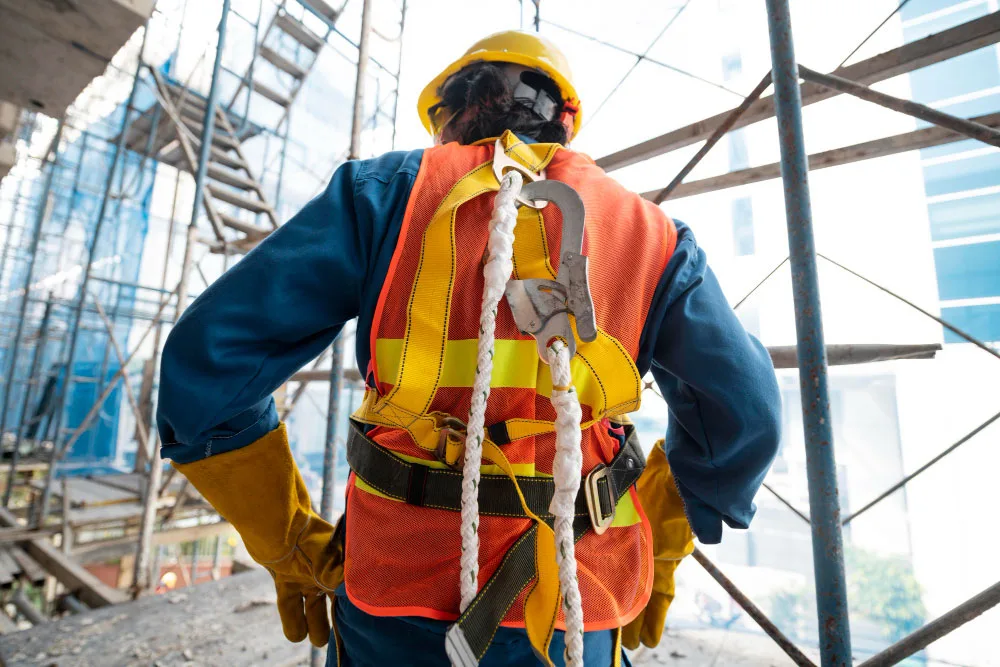
To work safely in the challenging fields of demolition and excavation, a strong commitment to safety is essential. Every step in these processes is rife with potential dangers, emphasising the need for strict safety measures.
The primary focal points of this article include:
These are two critical components of construction work. Demolition involves the tearing down of buildings and other structures, while excavation is the process of removing soil or rock from a site to form a hole or trench for construction. Both activities are inherently risky due to the nature of the work and the tools and machinery involved.
As such, understanding the processes and inherent risks of demolition and excavation is vital to ensure safety on the construction site. This involves being aware of the different types of demolition and excavation (such as topsoil, muck, earth, rock, or cut and fill), and the specific dangers associated with each.
Moreover, knowing the potential dangers is not enough. A key part of understanding both these undertakings is being prepared to mitigate risks and ensure a safe working environment. We will investigate this further in the upcoming sections.
Safety in this industry is not just a regulatory requirement, it is a moral obligation. Construction sites are fraught with potential dangers that can lead to serious injuries or fatalities if not properly managed. Hence, ensuring safety is important to protect the well-being of workers and prevent unnecessary accidents and legal complications.
Beyond personal safety, maintaining a safe demolition service and excavation site also has significant business implications. Accidents can lead to project delays, increased costs, legal liabilities, and reputational damage. Therefore, investing in safety is not just an ethical decision but also a sound business strategy.
Moreover, safety also contributes to the overall quality of work. A safe work environment promotes productivity, efficiency, and morale among workers, leading to better project outcomes. Hence, safety is not an afterthought but a key component of successful demolition and excavation projects.
It involves a range of common risks. For demolition, these include falling debris, exposure to hazardous materials (like asbestos or lead), structural instability, and noise and dust pollution. Excavation risks, on the other hand, often involve cave-ins, falls, falling loads, hazardous atmospheres, and water accumulation.
These risks have the potential to result in severe injuries, health issues, or even loss of life. For instance, cave-ins during excavation are particularly deadly, accounting for nearly half of all excavation-related fatalities. Similarly, exposure to hazardous materials during demolition can lead to long-term health problems.
In addition to these physical risks, these undertakings also pose logistical and environmental threats, such as transportation accidents, damage to nearby structures, and environmental contamination. Therefore, safety precautions should address not only the immediate physical dangers but also these broader risks.
Before starting any demolition or excavation project, it is vital to take into account a series of essential precautions. These steps lay the groundwork for a safe work environment and can significantly mitigate the risks involved.
The right safety equipment is inevitable in protecting workers during demolition and excavation. This includes personal protective equipment (PPE), which includes:
For certain tasks, respirators and hearing protection may also be necessary.
In addition to PPE, other safety equipment is also important. For demolition, this may include dust suppression systems, fall protection equipment, and secure barriers to prevent unauthorised access. For excavation, trench boxes and shoring materials can protect against cave-ins, while ventilation equipment can ensure a safe atmosphere in deeper excavations.
It’s important to note that safety equipment is only effective if used correctly. Therefore, proper training on the use and maintenance of safety equipment is essential says one of the best demolition contractors in Melbourne.
Training plays a critical role in ensuring safety during demolition and excavation. It equips workers with the knowledge and skills to recognise hazards, use safety equipment correctly, and respond effectively to emergencies.
Training should cover a range of topics, including hazard recognition, safe work practices, emergency response, and the use and maintenance of safety equipment.
It should also be specific to the type of demolition or excavation work being done, as different tasks involve different risks and require different safety measures.
We anticipate that, companies for demolition near you and their staffs are capable enough for demolition works by completing proper training and safety measures.
Demolition and excavation are inherently risky activities, but with careful planning, comprehensive training, appropriate safety equipment, and strict regulatory compliance, these risks can be effectively managed.
By understanding the importance of safety and implementing the right precautions, you can turn potential peril into a testament to your diligence and meticulousness. Where danger lurks, you can emerge unscathed, moving mountains and unearthing safety in its most crucial context.

©2025 Red Raptors Pty Ltd, All Rights Reserved. Design by MakTal

We accept all major credit cards
